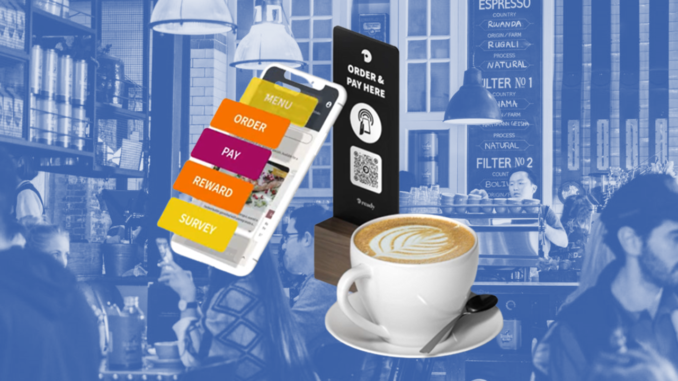
By Laurent May, CEO of Ready - 3.11.2022
The past couple of years have seen a significant uptick in the adoption of cutting-edge technology in the restaurant industry, and if the start of the year is any indication, the pace won’t be slowing down any time soon. We’ve already seen an announcement that a well-known hamburger chain will be rolling its fry-station robot out at 100 new locations, and another leading fast-food brand has filed trademark applications to run a “virtual restaurant” in the metaverse.
Developments like these are the ones that—like ghost kitchens and delivery drones—are novel enough to garner mainstream media coverage. The fact is, though, that beyond robots and virtual reality, tech is rapidly revolutionizing the way restaurants operate.
Much of that is, of course, attributable to the COVID-19 pandemic and its various impacts, from labor shortages to supply-chain disruptions and rising inflation. In one survey of restaurant operators, 87% of respondents either somewhat or strongly agreed that adopting new tech has been critical for the survival of their business over the last two years.
Pitchbook reported that venture capitalists poured more than $39 billion into food-tech companies in 2021, across categories including food, ingredients, grocery, and of course restaurants. Clearly, this modernization of the industry takes a steady influx of cash; a recent TD Bank survey found that restaurant operators cited their top areas of investment in 2022 as mobile ordering (54%); delivery services (47%); technology such as new POS digital signage or other in-store tech (45%); and alternative payment methods (37%).
A savvy investment
Tech is a savvy investment when you consider that, according to a recent Deloitte report, the number of restaurant patrons who prefer using digital methods of ordering food is growing. Deloitte found that 57% of customers prefer to use a digital app to order food for off-premises dining, while 64% prefer to order digitally on-premises (at quick-service restaurants).
“For customers who prefer and still take advantage of on-premises dining,” the Deloitte survey reads, “their preference for digital ordering continues to grow—even if that means less interaction with the traditional wait staff.” Reduced interaction with servers became par for the course during the pandemic, and many restaurants implemented contactless technology as an added safety measure.
With guests taking care of placing their orders and making payments without staff intervention, servers have time to focus more on building a rapport with guests and less on logistics. The ongoing challenges of finding and retaining workers might make replacing everyone with machines appealing for some hospitality operators. And while some guests find that using touchless tech to order and pay improves their dining experience, others will always crave the human element, which ought to ensure that as long as there are restaurants, there will be restaurant jobs—even if finding people to fill those jobs remains difficult.
Thanks for your loyalty
There’s no getting around it—food is getting more expensive. According to a U.S. Department of Agriculture forecast, food-at-home prices could increase between 1.5 and 2.5 percent this year, with food-away-from-home prices going up between 3 and 4 percent.
In a time of soaring prices, getting diners to keep coming back is no simple feat. One strategy is to reward guests for their loyalty. According to a recent survey of restaurant customers, 48% reported using loyalty programs in at least one type of restaurant, with 42% using loyalty programs at QSRs and 43% using them at restaurants with table service. The Deloitte report cited above found that the loyalty program benefits that customers appreciate most include coupons or reduced prices, free items, and exclusive products not available to non-members.
Restaurants with pay-at-the-table solutions offer their guests the convenience of collecting and redeeming points automatically when paying their check, with loyalty programs integrated directly into the checkout process through a self-service interface. Because customers can do all of this without having to flag down a server, this approach takes the burden off restaurants operating with reduced staff.
The future is now
A few major brands are already testing out fully automated restaurants, particularly in the quick-service restaurant space. Thanks to third-party apps and contactless delivery, diners can order, pay for, and consume a meal without ever seeing or communicating with another person. Of course, it’s all quite efficient, but it’s not what most people are after—at least not every time. We all appreciate convenience and enjoy having more control over our dining experience, but human connection is still a basic need. The restaurant of the future will need to strike a balance between the high-tech and the personal while giving guests the option of choosing one or the other, or some just-right blend of both.
Did I say “the restaurant of the future”? I meant the restaurant of 2022. The future is now, and going high-tech is no longer a “nice to have” in this industry; it’s an absolute must.
 Laurent May is the CEO of Ready, a fully integrated mobile self-ordering, payment and loyalty technology solution that’s defining the next generation of hospitality venues. He has over 20 years of product management expertise in the electronic payments space leading high performance teams.
Laurent May is the CEO of Ready, a fully integrated mobile self-ordering, payment and loyalty technology solution that’s defining the next generation of hospitality venues. He has over 20 years of product management expertise in the electronic payments space leading high performance teams.
Are you an industry thought leader with a point of view on restaurant technology that you would like to share with our readers? If so, we invite you to review our editorial guidelines and submit your article for publishing consideration.

